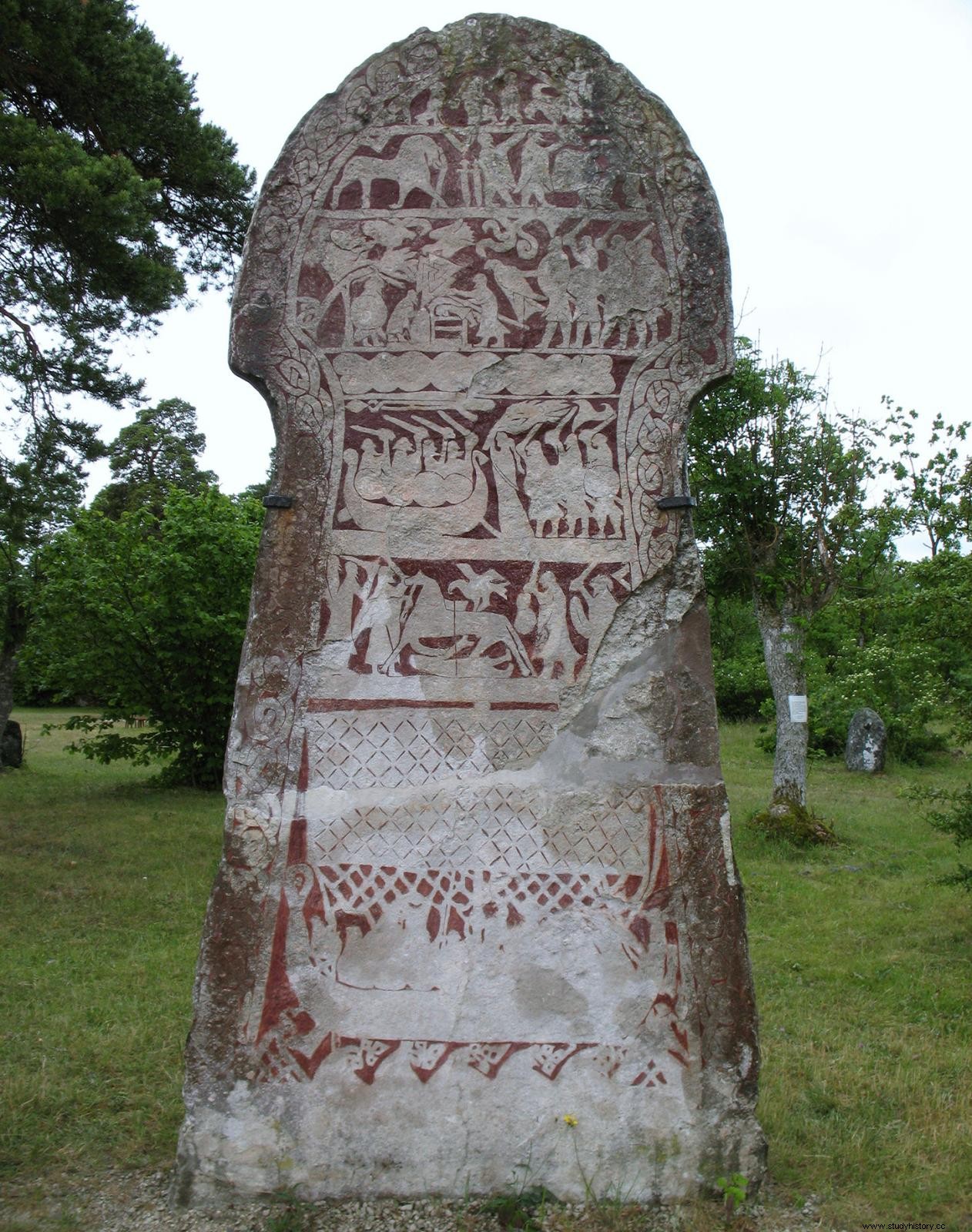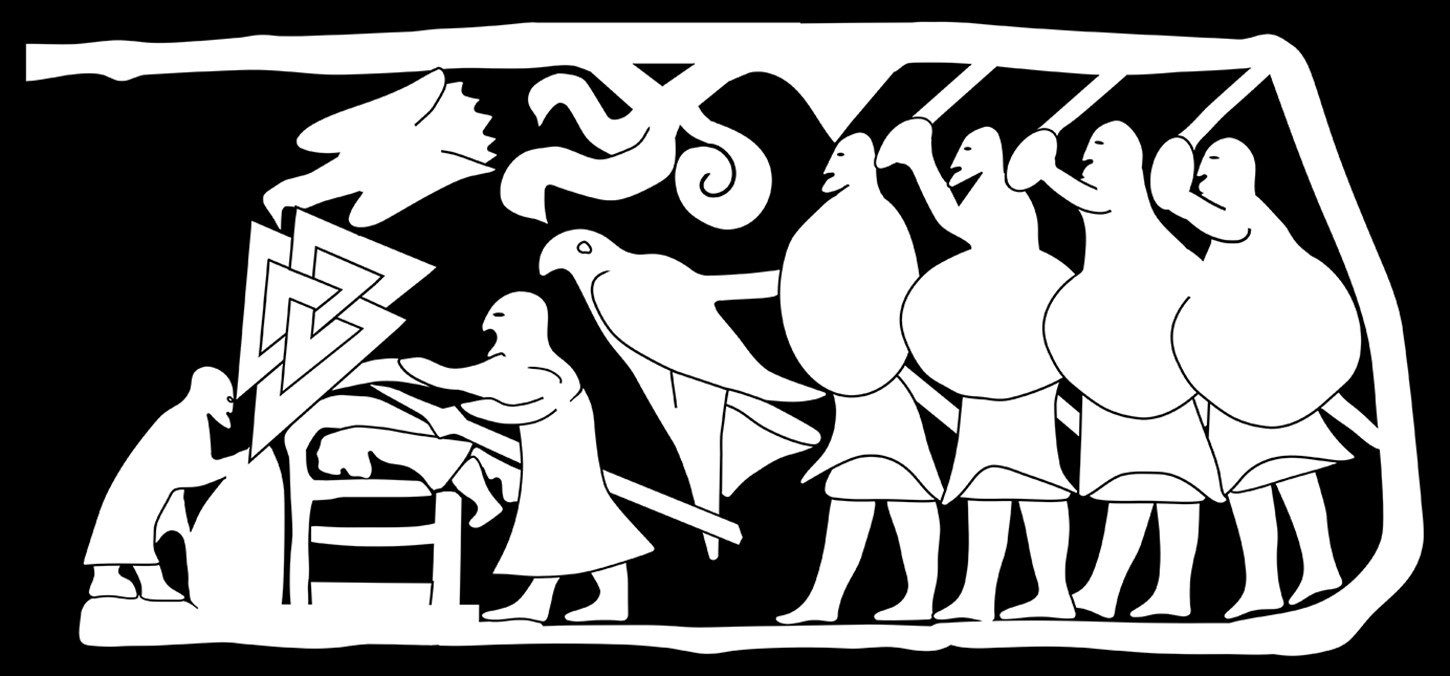This particularly brutal torture ritual attributed to certain Viking warriors has often had its historicity questioned. But recent work by historians and doctors has given credit to this practice, considered exceptional but not impossible from an anatomical point of view.

An excerpt from the Vikings series, showing the character of Ragnar Lodbrock, played by Australian Travis Fimmel.
Bold warriors, outstanding navigators, limitless explorers, inveterate looters, spiritual beings ready to sacrifice their lives for their gods... More than ten centuries after their disappearance, the Vikings have undeniably left a strong image in history and the collective imagination. . We no longer count the number of novels, video games or series featuring this Scandinavian civilization that appeared in the late Iron Age, and a good part of which, we hear, do not skimp on clichés. Among these popular cultural works, the Canadian-Irish series Vikings , whose well-crafted scenario is articulated, at least in its first part, around the semi-legendary character of Ragnar Lodbrok, who would have reigned over Sweden and Denmark between the 8th and 9th centuries of our era.
Vikings not being what one could call a family series, it does not hesitate to show us in a raw way how these sulphurous "Normans" - as they were called at the time (etymologically, "Men of the North ") - punished, according to a number of indirect sources, their most prestigious enemies. In this case, by inflicting on them a torture nicknamed "the blood eagle". Attention, bloody details:the ritual consisted of opening the back of the victim, very much alive and immobilized, and detaching one by one his ribs from the spinal column, before extracting his lungs through the wounds. The final beat of the lungs, spread out on either side of the spread ribs, was supposed to recall the movement of the raptor's wings.
Texts but no concrete evidence
Certainly cinematographic, does such torture have any historical reality? Difficult to answer this question, since there is to date no archaeological evidence to suggest that it was practiced at one time or another by the Vikings. Understand by archaeological evidence:the discovery of a skeleton that would present a minima ribs torn at the back. The ritual of the blood eagle has thus come down to us only through medieval texts - including complex poems - whose reliability is widely disputed by historians.

A view of the thorax illustrating the results of the detachment or cutting of the ribs. The left side illustrates how fracturing the ribs near the angles would make it difficult to mobilize the lungs through the opening made, as the residual attached portions of the ribs (indicated by the arrows) would have obscured access to the lung. The right side illustrates the opening of the chest wall if it were possible to detach the ribs directly from the thoracic vertebrae. Although this was not possible, it would have allowed better access to the lungs to structure the famous "wings". Credits:3D4Medical Complete Anatomy software/Luke John Murphy-University of Iceland
Today, a team of researchers wanted to take up the subject "from another end". Failing to be able to say with certainty whether or not the Vikings cut the backs of their victims to extract their ribs and lungs, Luke John Murphy, archaeologist specializing in pre-Christian religions in Europe at the University of Iceland, and his team, rather wondered if such a practice was above all anatomically possible. “Previous studies on the subject have tended to focus on the details and reliability of existing medieval descriptions of the blood eagle, arguing for or against the historicity of the ritual. taken into account, these are the anatomical and socio-cultural limits within which any 'blood eagle' should have been executed" , they write in the preamble to their study, to be published in the January 2022 issue of the American journal Speculum , published by the University of Chicago on behalf of the Medieval Academy of America .
A "difficult, but far from impossible" ritual
The scientists, including a historian of medical science and a professor of medicine and neuroscience, this time provide a firm answer to the question posed:yes, the Vikings could, technically speaking, have engaged in such a practice, a few close details. "Based on modern knowledge of anatomy and physiology, as well as a careful reassessment of nine medieval accounts of the ritual, we investigated the effect a blood eagle would have had on the human body. We discovered that the procedure itself was difficult, but far from impossible to perform, even with the technology of the time" , say the researchers in an English article published on the site The Conversation .


Top, one of the Stora Hammars stones located on the island of Gotland, Sweden, possibly depicting, on the second line from the top, the performance of an eagle ritual of blood. Below, the interpretation diagram of the team led by Luke John Murphy. Credits:Wikimedia Commons (top)/Luke John Murphy-University of Iceland
Experts believe that a particular type of Viking spearhead could have been used as a makeshift tool to quickly "open" the ribcage from behind. "Such a weapon could notably appear on a stone monument discovered on the Swedish island of Gotland, appearing on a potential representation, more global, of a blood eagle." But their research showed that even if the ritual was carefully performed, the victim would have died very quickly after their back was cut. "Therefore, any attempt to turn the ribs into 'wings' and place the lungs in them would have been performed on a corpse. That last 'wing flapping' would not have taken place" , assure the researchers.
Recover lost honor
However, according to the authors, the Vikings would not have been reluctant to mutilate corpses in a ritual setting, although such practices were probably unusual. "They weren't totally out of character for the warrior elite of the Viking Age" , they assure, recalling that the latter had no qualms about exposing the corpses of humans and animals during rituals, including during executions. "We argue that any historical blood eagle (...) would have been used to secure the social status of the ritual sponsor after the prior 'bad death' of a male relative at the hands of the ritual victim" , concludes the team.
"Contrary to established wisdom, we therefore argue that the Blood Eagle could very well have taken place in the Viking Age. It was physically possible, consistent with wider social customs regarding the execution and treatment corpses, and reflected a cultural obsession with displaying one's honor and prestige." Remember that these are the works of only one team, but they have the merit of shedding new light on a long and still debated question.
